Energetic politics
A large number of solar panels based on the Marine Twainthine Palms in California demonstrates the commitment of the US military to alternative energy sources.
Combining two or more energy sources, hybrid energy systems are increasingly viewed as the most efficient way of providing electricity to dismounted soldiers, which is necessary for the continued operation of their electronic equipment away from traditional energy sources.
At advanced operational bases and larger military facilities in theaters, these technologies, only on a large scale, are becoming increasingly popular as a means of reducing dependence on traditional diesel generators. The US military, being the largest consumer of liquid fossil fuels in the world, is working to reduce its consumption in order to reduce its logistic tail and the associated loss of people and property as a result of attacks on supply columns. “The military has a unique perspective on renewable energy; they do not use it to be known as “green”, but rather to increase their capabilities and combat resilience, said Phil Robinson of Protonex Technology. “Therefore, investments in reliable energy management and alternative energy technologies have always been consistent and therefore effective. Very different from the civilian sphere, where investments in alternative energy are highly dependent on the price of oil. ”
Peter Podesser of a fuel cell specialist at SFC Energy noted that the current combination of diesel generators and lead-acid batteries is a hybrid (or mixed) system that has been fully developed from a technological point of view. He noted that over the past 10 years, a huge amount of research and development has been carried out in the field of hybrid systems, mainly a combination of solar and wind generators, batteries and fuel cells, but their deployment in the army has been slow. “To the disappointment of consumers and industry, this implementation process just took more time than everyone expected. But if you look at the defense industry, in practice, as a rule, it takes ten years to introduce new technologies. ”
In part, he attributes this to the changing nature of wars, especially those that the West has waged over the past decade. Such conflicts, for example, US-led operations in Iraq and Afghanistan, were characterized by asymmetrical threats. Separate patrol groups and special forces, which, in one way or another, need energy, regularly encountered them. “The structure of demand has changed,” Podesser noted. - Autonomous energy is a promising direction. You usually do not need to return to a large base, where energy is in excess. You have a large number of people who have been separated from the base for many days and at the same time they have to work. The development of autonomous energy is a consequence of a change in the structure of the threat. ”
A fuel cell is a device that efficiently generates direct current and heat from a hydrogen-rich fuel through an electrochemical reaction. It is a much more efficient system compared to internal combustion engines.
Military incubator
Although the military led the development of hybrid energy systems in terms of technology, but when it comes to project implementation, here they are caught up with commercial and even government structures. Jeff Helm of Saft Batteries claims that the US Army and Marine Corps are working on expeditionary power systems that have determined the hybridization trend in this area, but, as far as practical implementation is concerned, they were ahead of non-military emergency services, oil and gas and others. who have enough funds for the purchase and a great need for mobile energy sources. “The military is like an incubator,” said Helm, “the technology inside has matured, and others are involved in commercialization.” He explained that the military first looked at the civilian sector in order to reduce the cost of new technologies before introducing and adapting them for military purposes. “Large-scale research and development funding does not always go to procurement financing.”
Podesser agreed with him, noting that from 2000 to 2010 was the year the USA and Germany spent a lot of effort on the development of portable fuel cells. Most of the work was led by the NATO working group, which includes the SFC company, but after the cessation of the Alliance’s military operations in Afghanistan at the end of the last decade, a reduction in the rate of work inevitably followed. “As for their actual operation, we again return to the slow introduction of state structures ... The first stage of development is mainly determined by military expenses, but then the introduction of many things, such as solar panels and fuel cells, occurs in the civilian sphere.”
The earliest military consumers of new portable fuel cells, for example from SFC, are generally expected. First of all, these are special forces and other specialists such as advanced aviation observers. These units, being key elements of the armed forces, operate on the front line and perform a lot of specific tasks, often on foot and in isolation from the main forces, so they need energy sources to operate all kinds of systems and equipment.
The advanced air gunner calls for direct air support. Gone are the days when the only means were a radio station, binoculars and a map. Now the gunner has many devices and they all need electricity.
Expeditionary difficulty
“Expeditionary energy technologies should be lightweight, portable and reliable enough to be used at the forefront, while they are technically the most complex,” Robinson of Protonex believes. “The more advanced the fighter’s position is, the more complex the technical problems must be solved . Today, the military take on the supply of power management systems weighing less than half a kilogram, they can be worn in the soldier duffel bag. They contain tens of thousands of lines of program code for automatically evaluating available alternative and traditional sources of energy, obtaining energy from a more efficient source, converting this energy in the form that is needed, and storing it in the capacitive battery or other device itself. Since these systems are fully automatic, the user does not need to distinguish between volts and amps. ”
Protonex SPM-622 combines high-efficiency energy conversion technology, equipment power management and energy storage in one product; it is able to supply virtually any portable military equipment with power from various sources
According to Chelm, the marine corps is leading among the US military, since its expeditionary nature forces us to reduce the logistic burden by all means. As an example, he cited the program MEHPS (Mobile Electric Hybrid Power Systems - mobile hybrid energy systems). Being one of several Corps energy systems for expeditionary forces, MEHPS is being developed in the “light hybrid” and “medium hybrid” versions, including solar panels, lithium-ion batteries and a generator.
The requirements for a lightweight hybrid version with a power of five kilowatts include restrictions on the weight of individual components, so that two or four people can carry them. These are the five kilowatt AMMPS (Advanced Medium Mobile Power Sources) generator and the three kilowatt tactical silent generator TQG (Tactical Quiet Generator). The system should be light enough and small enough to be transported on vehicles of various types. The US Army wants this option to provide at least three hours of work and at least eight hours in silent monitoring mode and use no more than 7,5 liters of fuel per day. Reliability requirements determine 500 uptime.
The average hybrid version of MEHPS can have components that you need a person from 4 to 6 to raise, its AMMPS generator should provide at least 10, and better 15 kW. The system should fit into the LTT-MCC (Light Tactical Trailer Marine Corps Chassis) light trailer. The requirements for silent observation are the same, from three to eight hours, but since it is designed to supply a larger number of consumers, the requirements for fuel consumption are expanded: the threshold value is 27,2 liters per day, and the target value is 22 liters per day. The MEHPS program is currently at the stage of development and pre-production, and the first deliveries will start in 2018 year on schedule. According to Helm, the main task in integrating a system of this kind is the management of power supply parameters, that is, power conversion and control software, which controls the stabilizers and voltage inverters responsible for converting alternating current to direct current.
Sun consumption
Solar energy becomes a matter of consumption. According to Podesser, “It really is about the possibilities of flexible, folding thin-film solar power systems. You need a small mass, but the key element is adaptability to actual operation in adverse conditions and the duration of service life so that these systems can survive in the field. ” One of the suppliers of such systems is the American company PowerFilm. She was selected in March 2017 by the US Army and Thales to secure a UBC (Universal Battery Charger) universal battery charger contract worth 49 million dollars. The power source was chosen as a folding solar panel on the 120 W from PowerFilm. It supplies electrical current to the UBC, which in turn is capable of charging batteries of various types, which allows the squad or platoon to work for at least 72 hours without recharging batteries in places where there is no centralized power supply. PowerFilm claims that a lightweight, reliable and “highly portable” solar panel easily folds up and enters a soldier duffel bag, during stops it can be quickly expanded to ensure reliable and safe electricity.
Protonex's Adaptive Battery Charger can be used on 28 or 12 volt vehicles or in the mountains with a portable solar panel; it automatically adapts the charging current to the available input power.
Regarding batteries, Podesser noted that the high level of development arising from the requirements for military electric transport with increasing specific energy and power raises some security issues. "Some of the new chemical compounds, whether lithium-ion or others, need to be given great attention, because you have a huge amount of energy and this should not be a threat." On the other hand, fuel cells can be made smaller, lighter, and more energy-intensive with minimum fuel consumption and minimal cost. However, the real benefits are achieved with the right combination.
Watch for weight
“Batteries are an excellent solution, let's say, up to 24 watches. If you then combine the battery with the fuel cell and the solar panel, you can reduce the overall weight of the system while increasing the operating time, since while the sun shines with sufficient power, the solar panels can be a source of energy and charge batteries, and the fuel cells will serve as insurance. ... Hybridization or a combination is, of course, the key that will open up the best prospects for the consumer, ”Podesser believes. - Take the power of special operations. Right now, we can remove about 80 percent of battery mass from standard equipment of special forces for a four-day task by providing an integrated solution with fuel cells, lithium-ion batteries and solar panels, in total 9 kg of weight off their shoulders. ” In a difficult situation, additional supplies of water and ammunition, taken with them in return for the saved mass, can save soldiers' lives.
Phil Robinson called solar batteries, batteries and fuel cells natural partners in a reliable and efficient hybrid system. “By adding batteries, a solar battery can often provide round-the-clock work. However, in order to guarantee uninterrupted power supply on short winter days, cloudy weather, that is, in conditions of insufficient lighting, the sets of panels and batteries become excessively large. When adding fuel cells that are needed only when there is no sun, solar panels and batteries can be adjusted to average, not to extreme conditions. ” There is also the problem of return on investment when the amount of fuel consumed goes beyond what governments are willing to pay in terms of dollars per kilowatt-hour.
As is the case with many new technologies, the problems of uniformity, compatibility and standardization are increasingly worrying operators. “Everyone wants universal interfaces, but there are no standards for any of these systems, so you will not get large-scale savings. From this point of view, this is all very individual, everything depends on the conditions of the customer. ”
Solar panels allow marines to charge batteries during a stop on the march, while a “bionic” power system in the form of a knee drive converts body movements into electrical current
Evolution
Jeff Helm noted that solar power systems have come a long way regarding their efficiency in converting sunlight into electrical current. As for batteries, in particular, lithium-ion types, the reduction in cost and increase in service life have significantly increased the return on investment in relevant technologies, which are becoming more perfect and that more and more market participants are mastering.
According to Helm, having a high specific capacity, lithium batteries are indispensable for creating systems of autonomous energy storage and more and more often combine with charging systems based on solar cells, and in some cases with small wind turbines, small diesel generators play the role of backup means. At the same time, there is great competition from the fuel cell technology. “Many manufacturers are engaged in lithium-ion types, as well as solutions based on lithium-iron-phosphate. Some manufacturers have even mastered the release of lithium-titanate-oxide batteries. And one more promising direction is nickel-manganese-cobalt systems, that is, it suggests here that the technology of lithium-ion batteries is sufficiently developed. All manufacturers hone it for certain tasks. There are batteries, such as lithium-sulfur, which have a large specific charge capacity, but a small output voltage and a very short lifetime (50-60 cycles), but for some tasks this may make sense ... Lithium-air or lithium Oxygen systems are another area in which large-scale research is conducted, and this is due to their record high specific energy and capacity. These types of batteries will appear in the next five to ten years. ”
Saft chose a lithium-iron-phosphate compound for its latest 6T battery. It has a standard form factor for the United States and NATO; such vehicles batteries are increasingly used to create military autonomous power systems. Helm remarked on this point that “this is a fairly versatile battery at a reasonable price. We spent a lot of time to reduce its cost. "
The unification of vehicle batteries and autonomous power systems makes life easier for troops in the field. “At any time, you pull the batteries out of the car and create an autonomous power grid or vice versa,” Chelm explained. As for the cost and specific energy, Saft made a breakthrough not only in purely technological terms, because it used a proven commercial lithium-ion-phosphate compound for its new 6T battery. However, the creation of a standard battery, which could be used for a variety of tasks, is really not trivial. “If you need more kilowatt-hours, you can connect several batteries in parallel. It can also be charged from the vehicle’s on-board network; it does not need a special charger. ”
Portability
Helm, looking to the future, believes that in the next five years, operators will need quite a lot of commercial hybrid power systems, adapted to the requirements of the military. All in order to save on fuel, reduce the amount of logistics and reduce the risks. “I believe the military will purchase off-the-shelf commercial energy storage systems, since they have already been developed.”
One of the new SFC products is a Jenny 1200 methanol fuel cell with a rated power of 50 W. Cartridges of three standard sizes with pure methanol made it possible to significantly reduce the mass in comparison with the old systems operating on a mixture of methanol and water. Using Jenny 1200 to charge batteries reduces the burden on the soldiers, because the number of spare batteries they have to carry is reduced. The company also manufactures 500 W fuel cells, such as the EFOY Pro 12000, and recently introduced a system of the same power for engineering and dismounted tasks, including the supply of electricity to surveillance systems. “We will come out with a military version of this product in the coming year,” said Podesser.
The Jenny 1200 fuel cell generator with 50 watts of power reduces the amount of wearable spare batteries. Automatic silent loading. The generator does not require maintenance and has no heat unmasking signs.
SFC has also developed fuel cells that can be buried in the ground and “left” for a long-term supply of maintenance-free ground systems, such as seismic sensors and / or cameras, which can be ignored for up to one year. Regarding prospects, Phil Robinson noted an increase in the number of smart energy management and energy storage systems currently being evaluated by the US military. “As the Ministry of Defense moves from testing to full-scale development, the market for these technologies will only expand.”
Materials used:
www.shephardmedia.com
www.marines.mil
protonex.com
www.sfc.com
www.saftbatteries.com
www.armytimes.com
ru.pinterest.com
www.wikipedia.org
en.wikipedia.org
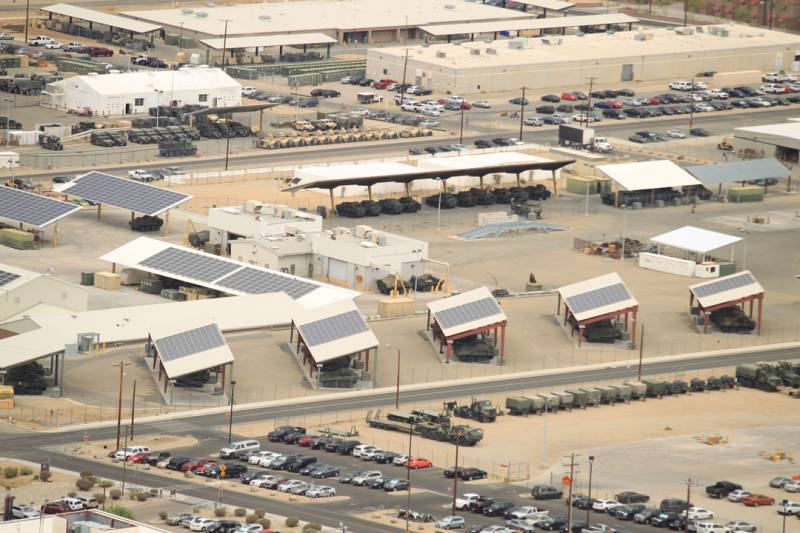
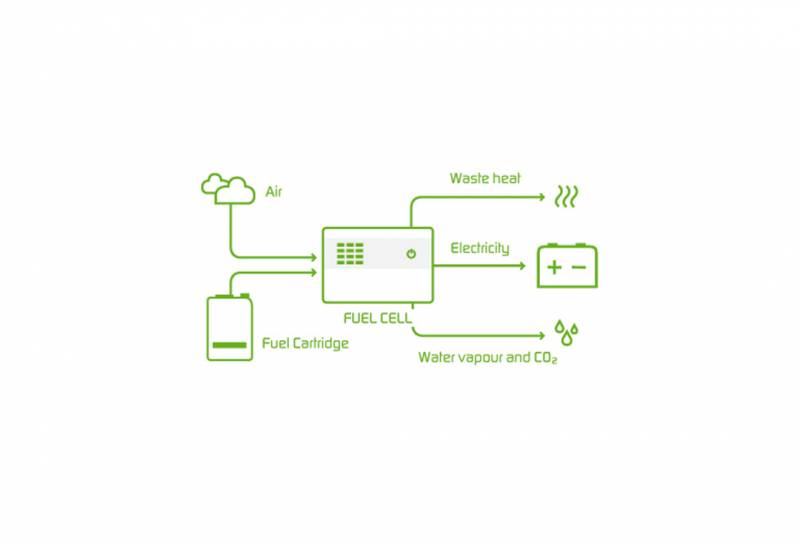
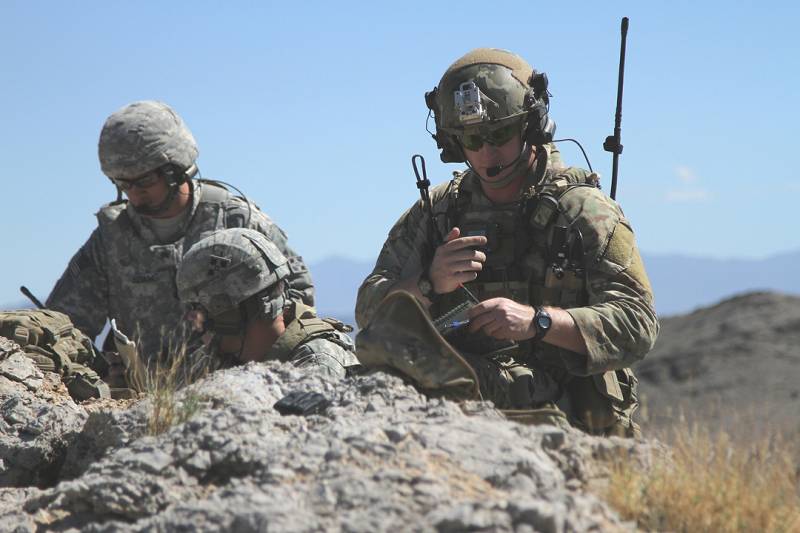
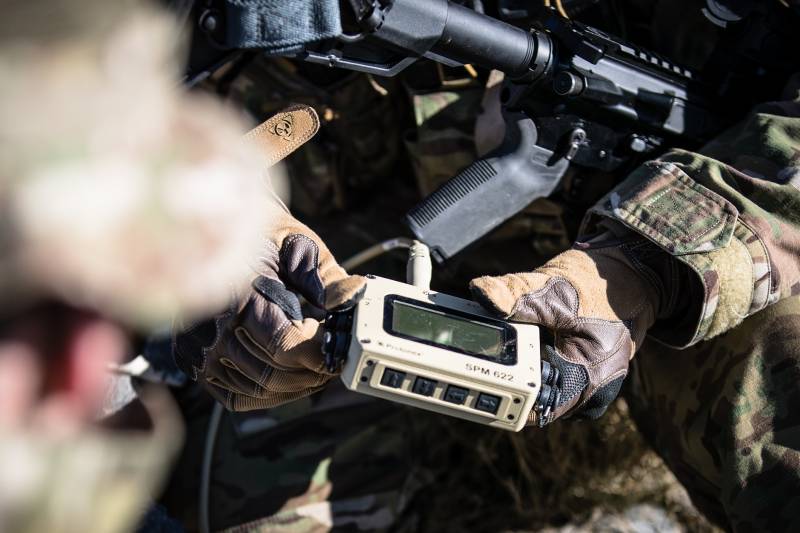
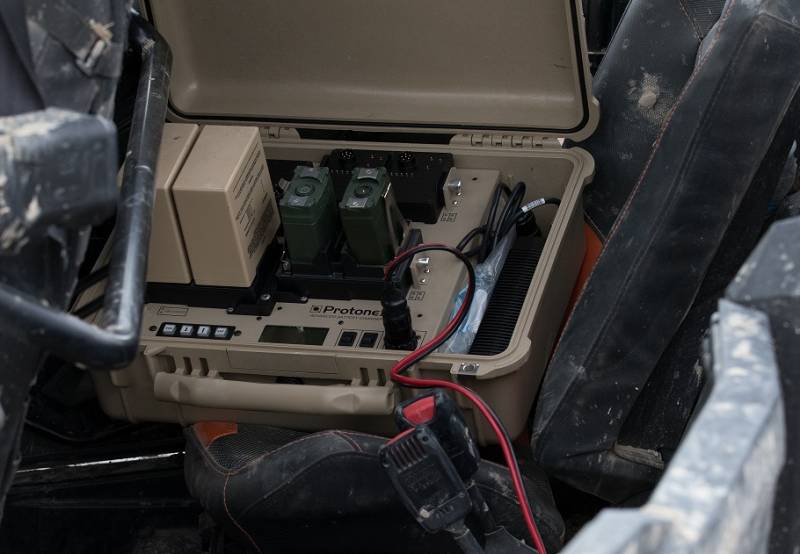
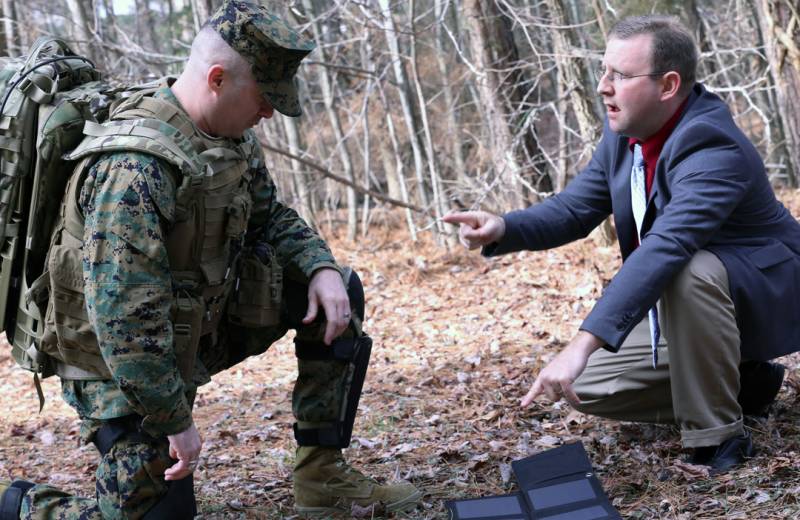
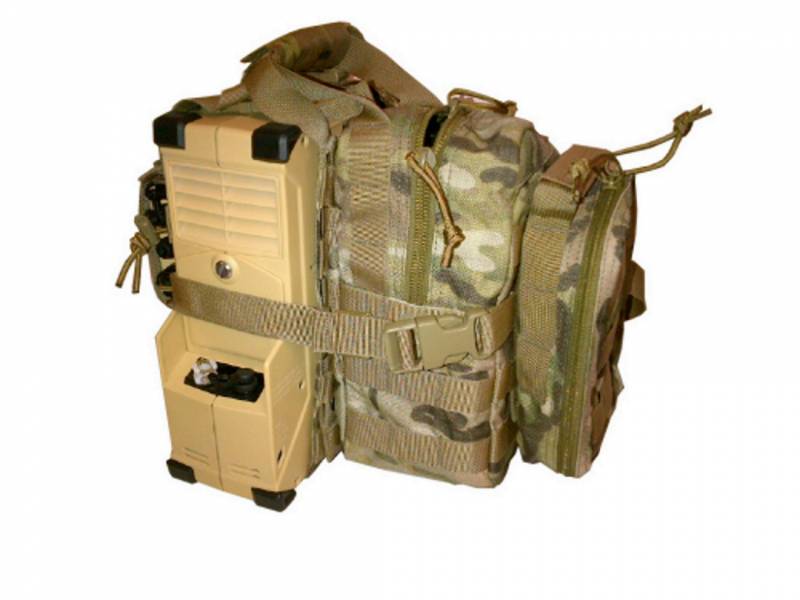
Information